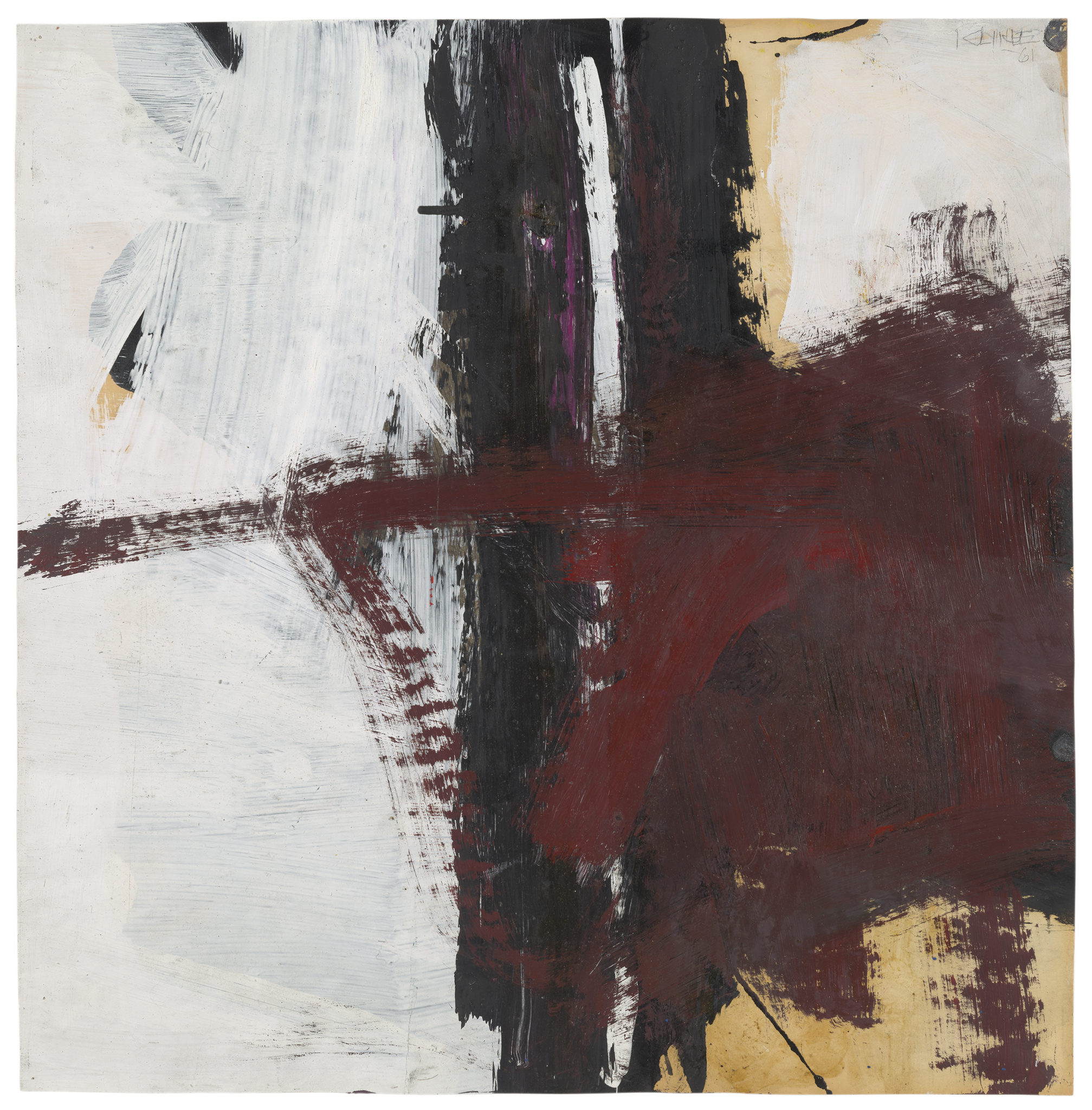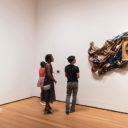
Courtesy of YUAG
On Feb. 25, the Friday Foundation — a foundation dedicated to supporting arts organizations — donated a collection of works by abstract expressionist artists Mark Rothko and Franz Kline to the Yale University Art Gallery.
The gift honors the legacy of late philanthropists Jane Lang Davis and Richard E. Lang. The Lang family has deep ties to Yale, with multiple alumni in their extended family. Contained in the gift are four works by Kline — including a painting and three works on paper — and two paintings by Rothko. These pieces hail from the Lang collection, a renowned private collection of 20th-century art. They offer great insights into both painters’ artistic process and the evolution of their respective styles.
“I think what’s really delightful about [the pieces] is that they show these artists’ progression from an early point in their career,” said Cynthia Schwarz, a conservator at the YUAG.
The two Rothko pieces mark a new phase in Rothko’s artistic career. The first piece, an untitled painting from 1941-42, is now the oldest Rothko piece in the YUAG’s collection. Schwarz said this painting is an early example of what she described as Rothko’s “mythological biomorphic period,” a period during which he fixated on mythological elements in his art.
The second painting, Rothko’s “No. 11 (Yellow, Green, and Black)” from 1950, is now the earliest example in the YUAG’s collection of Rothko’s color field paintings, which embody his signature style of abstract blocks of color. Rothko would continue to employ this style throughout the rest of his career, Schwarz added.
Even though the two paintings are separated by a decade and vary in artistic style, they are both divided loosely into three registers, or vertical sections, and use similar shades of greens and blues to split up the sections.
Keely Orgeman, YUAG’s curator of modern and contemporary art, said it was interesting how Rothko’s compositional format from earlier periods carried over to his later work.
One of the Kline paintings included in the collection, called “Portrait of Nijinski,” is also from an early period in the artist’s career. Like the Rothko pieces, it contains elements that Kline would continue to explore in his career. The painting’s subject — ballet dancer Vaslav Nijinski of the Ballet Russes — is a recurring figure in Kline’s later works.
“He was fascinated,” said Elizabeth Hodermarsky, the Sutphin family curator of prints and drawings at the YUAG. “[Kline] went back again and again and again to paint this figure, on both canvas and paper.”
Theresa Fairbanks Harris, the YUAG’s chief paper conservator, said that one of Kline’s paper works in the gift is a 11-by-8.5-inch oil and ink piece speculated to be a painting of Nijinski. This piece is nearly identical in design to a larger enamel on canvas housed at the Metropolitan Museum of Art.
The sketch is drawn on common paper and contains graphite grid marks on top of the paper. Harris said these markings indicate Kline’s plans to transfer the design on a larger canvas.
“He’s not like Pollock, throwing paint down. It’s very, very planned, and controlled, and very subtle and very beautiful,” Harris said. “That’s the wonderful thing about works on paper and drawings, is they give you an idea of the artist’s first ideas. It’s a way to understand their thought process and how they develop a design.”
Schwarz said Rothko’s 1941 untitled painting offers a similar glimpse into the artist’s careful process. Using infrared, she and her colleagues discerned Rothko’s “underdrawings,” or the charcoal sketches he used to guide his painting strokes.
“I always think it’s interesting to think about abstract expressionists struggling with composition just like any artist did,” Schwarz said. “We often think they just have this thought that they put down on the canvas and it’s fully formed.”
Orgeman and Hodermarsky mentioned plans to showcase these pieces in an exhibition this spring if the museum reopens to the public. Additionally, the curators hope to contextualize these works in terms of 20th-century art in a larger exhibition in the winter of 2022.
If it occurs, the winter 2022 exhibition will take place in the Jane and Richard Levin Gallery.
Annie Radillo | annie.radillo@yale.edu
Correction, March 6: A previous version of this story incorrectly spelled Schwarz’s last name as “Schwartz” and described Rothko and Kline as abstract impressionist artists — they belong to the abstract expressionist movement. The story has been updated.








